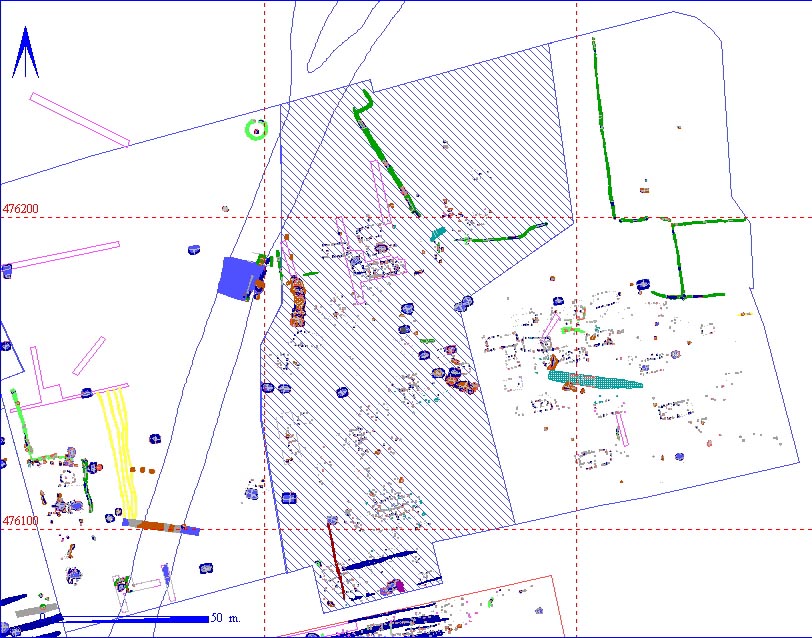
| Area Details | |||||||
| Length | 164 m | Width | 90 m | Depth | 10 | ||
| Area | 123333.48 sq. m | Volume | |||||
| Material Culture | Number of Objects | 0 | Number of Animal Bones | 1 | |||
| Environmental | |||||||
The matrix diagram above shows all of the spits and layers in Area 2CB indicating their relationship to each other. Click on the spit number which you wish to see in more detail. The bold, flashing (Netscape browser only) context indicates the current catalogue entry.
The area contained 15 Grubenhäuser, 20 post hole structures, a series of gravel quarry pits and a pit complex, as well as part of a Roman enclosure system in the north.
| KEY_ID | TYPE | SHAPE | L | B | D | PROFILE | NOTES |
| 002CB00001 | SPIT | COMPLEX | 16400 | 8978 | 10 | UNDULATING | INITIAL MACHINE CLEARANCE OF AREA 2CB. |
| KEY_ID | SPECIES | ELEMENT | QUANT | CHEW | BURN | BUTCH | FBRK |
| 002CB00001 | SHEEP/GOAT | M/T br | 1 | 1 | 0 | 0 | 1 |